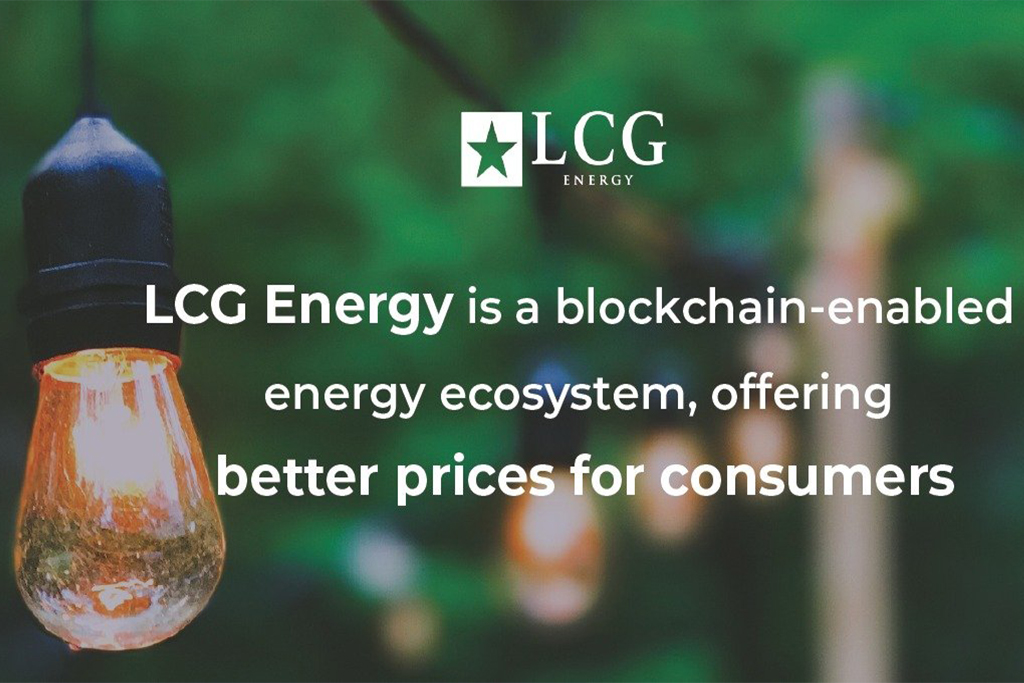Photo: LCG Energy / TwitterThe International Energy Agency keeps warning us that our current energy system is absolutely unsustainable. Renewable energy seems like the only solution – but only if the whole framework of energy trading and consumption is overhauled. Blockchain technology can provide the missing element to achieve that.The growth of GDP and prosperity across the world brings a constant rise in demand for energy. The figures are alarming: According to the World Economic Outlook 2018 report, between now and 2040, the global demand is expected to grow by 25%, with China becoming the leading consumer, using 70% more energy than the US.Even though the share of renewables is projected to grow to almost 40% (as opposed to 15% today), the remaining 60% will still be represented by
Topics:
Svetlana Soroka considers the following as important: lcg, lcg energy, lcg energy blockchain, lcg energy news, Press Release
This could be interesting, too:
Chainwire writes Over Million Raised in XYZVerse Presale as Token Generation Event Draws Closer
Chainwire writes Memeagent Is Gaining Attention – Meeting Chad, the AI Agent That’s Changing the Game
Chainwire writes Memeagent Is Gaining Attention – Meeting Chad, the AI Agent That’s Changing the Game
Chainwire writes #Memhash Now Available on Exchanges After Successful Mining Phase

Photo: LCG Energy / Twitter
The International Energy Agency keeps warning us that our current energy system is absolutely unsustainable. Renewable energy seems like the only solution – but only if the whole framework of energy trading and consumption is overhauled. Blockchain technology can provide the missing element to achieve that.
The growth of GDP and prosperity across the world brings a constant rise in demand for energy. The figures are alarming: According to the World Economic Outlook 2018 report, between now and 2040, the global demand is expected to grow by 25%, with China becoming the leading consumer, using 70% more energy than the US.
Even though the share of renewables is projected to grow to almost 40% (as opposed to 15% today), the remaining 60% will still be represented by fossil fuels. And even the growth in the renewable sector is not all good news: Much of it will be subsidized by governments. Subsidies are necessary because otherwise, producers of “clean” energy simply would not be able to compete with giant power plants: For example, biofuel often costs more to produce than its market price.
However, billion-dollar subsidies put an unnecessary strain on the economy (at the expense of other projects) and can only be afforded by rich countries.
The Key to Sustainability
When talking about sustainable energy, most people only think of environmental sustainability. Indeed, the energy of the sun, wind, hydro, as well as the energy extracted from biofuel, cannot be exploited to the limit, unlike oil and gas. However, economic sustainability is important, too. Fossil fuels are subsidized much more than renewables and have a large established distribution network, and if the subsidies to solar and wind energy producers were suddenly stopped, they would become financially unsustainable.
Right now, small companies making “clean” energy mostly sell their electricity to big power plants because they lack direct ways to reach their potential customers. Here is where blockchain technology comes in.
Blockchain allows for disintermediation (removing the middlemen in all areas of business), secure records, and low transaction fees. For the energy market in particular, this could spell a number of benefits:
- Decentralization of grids: connecting small producers (or even individuals who own solar panels) to buyers. In an extreme case, users could sell energy to each other without any power plant involved.
- Energy tracking: For each unit of energy, a unique certificate could be issued to represent that “load” of energy in transactions. This is especially important since, in the EU, all “clean” energy must be accompanied by a certificate.
- Easier investments: Aspiring green-energy projects could raise funds using the same blockchain network. This kind of peer-to-peer investment is less onerous than VC funding.
The Next Steps
The scenario described above, with networks of independent microgrids, is a concept of the future. Right now, there are still too many regulations in place to allow individuals to trade energy, and the existing grids are not adapted for such energy exchanges. However, there are already many applications that blockchain technology can have in the energy industry.
According to LCG Energy – an established European energy contractor and electricity supplier licensed by the German and Austrian Federal Network Agencies for Electricity, Gas, Telecommunications, Post and Railway serving more than 50,000 clients – the most natural first step is to link blockchain technology with the rapidly developing Internet of Things and so-called Smart Meters.
Smart Meters are a new form of electricity meters that gather information about energy consumption and transmit it to energy companies digitally, automatically drawing up up-to-date bills based on real data. In a blockchain-enabled system, such bills are paid using tokens, and the records are stored on a distributed ledger. There is no risk of fraud and no payment fees charged by banks.
What’s more, users can learn more about their energy usage habits and improve them, saving up to 20% on their bills.
A blockchain-based energy ecosystem, such as the one LCG is building, must be sustainable. To achieve this goal, it’s crucial to conduct a deep market analysis and understand how energy trading works. Unlike brand-new startups with no user base and no partner network, LCG is a licensed enterprise with a large customer network and enough expertise in the energy business to ensure continuing benefits for all ecosystem members.
For many people, blockchain technology is not associated with sustainability due to the large energy consumption of Bitcoin mining farms. However, one must remember that blockchain technology is much more than just Bitcoin and can lead to a profound positive transformation. It may still be some years away, but projects like LCG Energy are bringing it closer.
Learn more about the project and the company behind it on https://lcg-group.de/.
